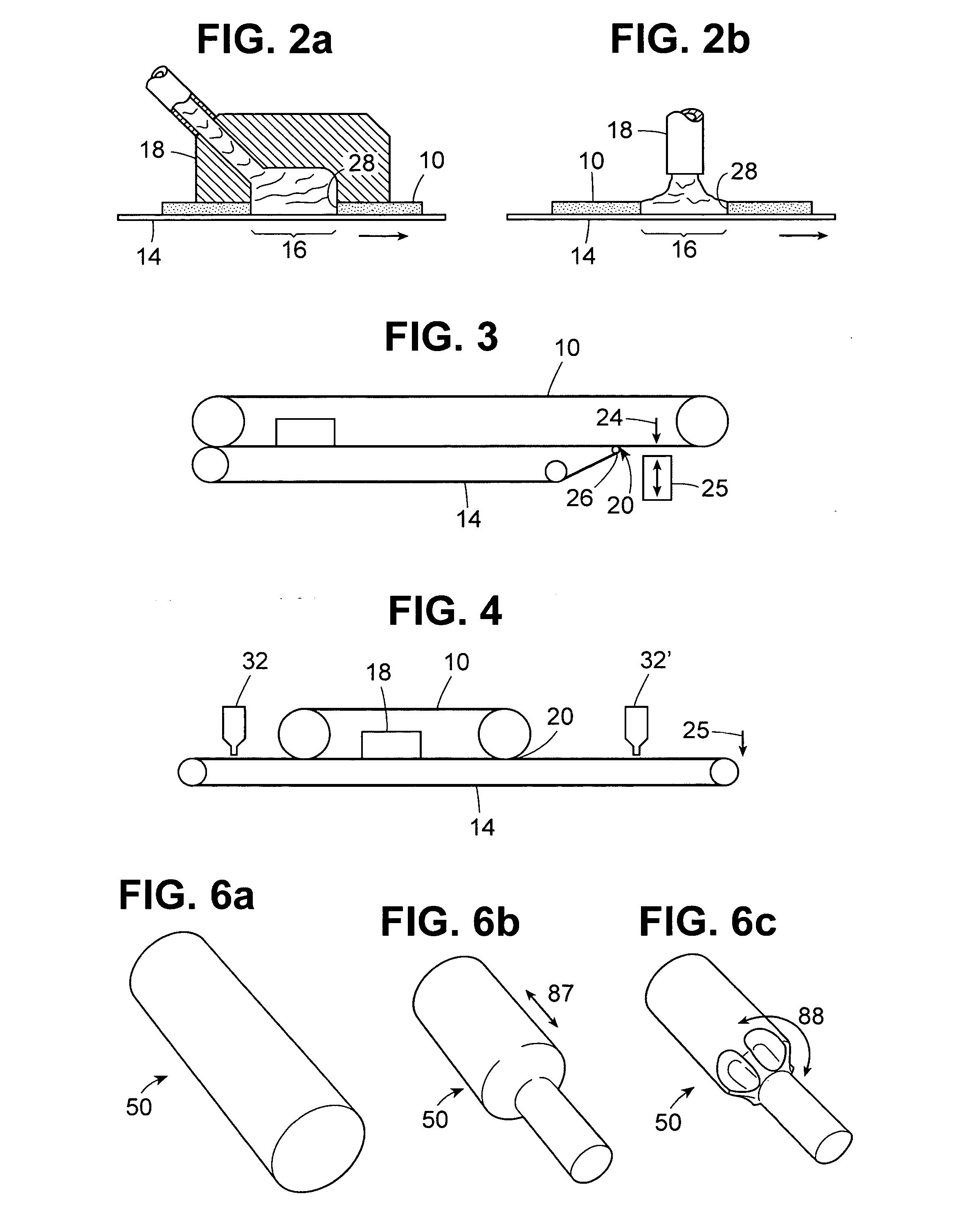Methods and apparatus for forming shaped edible pieces
a technology of edible pieces and molded parts, which is applied in the field of forming thin edible pieces, can solve the problems of significant technical constraints and challenges in the manufacture of thin edible pieces, significant limitations on the product that may be obtained, and the inability to sculpt thin chocolate pieces using conventional techniques, etc., and achieve the effect of improving the release characteristics
- Summary
- Abstract
- Description
- Claims
- Application Information
AI Technical Summary
Benefits of technology
Problems solved by technology
Method used
Image
Examples
example
[0063] Dove Milk Chocolates, a commercially available milk chocolate, was melted and tempered in a Sollich Mini Tempering System TFD 150. The chocolate was cooled from 45° C. to 28° C. to produce cocoa butter crystals of stable and unstable polymorphs. The tempered chocolate was then warmed slightly to 31° C. to melt out unstable crystals. The tempered chocolate was held at 31° C. and had a temper level of 6 CTU (° F.) and 0.5 slope as determined by Tricor Tempermeter Model 501.
[0064] A urethane belt material (1.5 mm thick) with a rose petal pattern cut out (41 mm, major axis×31 mm, minor axis) was used in conjunction with a segment of a second belt material (white polyurethane). The two belts were sandwiched together to lay flat such that an open cavity was formed. Approximately 10 cm3 of chocolate, having a temperature of 28-30° C. was poured into the open cavity formed by the top urethane belt. The chocolate was spread and leveled using a putty knife held at 30′ off the horizont...
PUM
 Login to View More
Login to View More Abstract
Description
Claims
Application Information
 Login to View More
Login to View More - R&D
- Intellectual Property
- Life Sciences
- Materials
- Tech Scout
- Unparalleled Data Quality
- Higher Quality Content
- 60% Fewer Hallucinations
Browse by: Latest US Patents, China's latest patents, Technical Efficacy Thesaurus, Application Domain, Technology Topic, Popular Technical Reports.
© 2025 PatSnap. All rights reserved.Legal|Privacy policy|Modern Slavery Act Transparency Statement|Sitemap|About US| Contact US: help@patsnap.com



